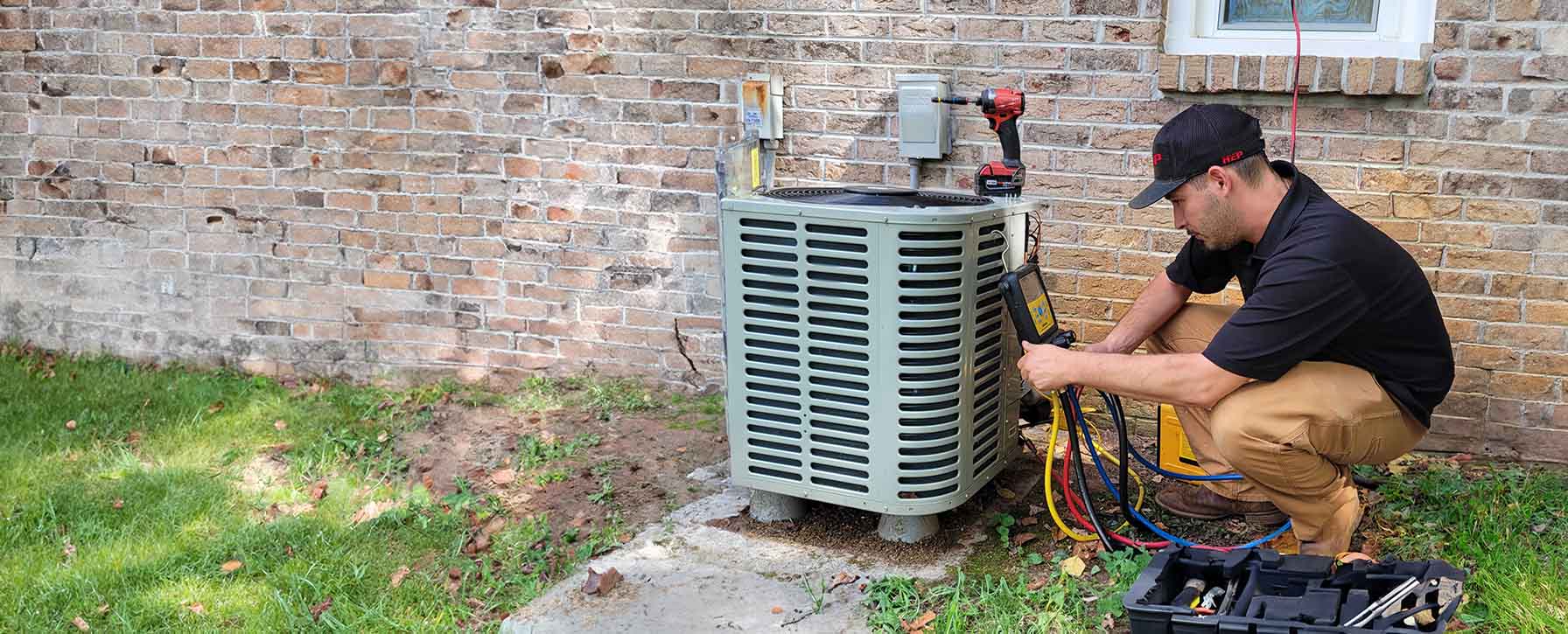

Energy Use
Your trusted partner for professional home services. Quality workmanship, guaranteed satisfaction.




- HEP
- Energy Use
Energy Use | Ventilation and Air Quality | Heating and Air Conditioning | Grandview
From sweltering Missouri summers to crisp winter mornings, Grandview homeowners trust HEP to keep indoor temperatures perfect without sending utility bills through the roof. Our team pairs high-efficiency furnaces, heat pumps, and smart thermostats with tailored home assessments, so every dollar you spend on heating and air conditioning translates into real comfort. By sealing leaks, replacing outdated equipment, and fine-tuning existing systems, we consistently reduce energy use while extending the life of your HVAC investment.
True comfort is about more than temperature—it’s about the air you breathe. HEP specializes in balanced airflow solutions that boost ventilation and air quality, filtering out allergens, controlling humidity, and flushing away stale indoor pollutants. Whether you’re upgrading ductwork, adding ERV/HRV technology, or scheduling a routine maintenance visit, we deliver cleaner, healthier air and measurable savings, all backed by local technicians who know Grandview homes inside and out.
FAQs
How can I improve my HVAC system’s energy efficiency in Grandview’s climate?
Begin with a professional load calculation to ensure your system is correctly sized for both Grandview’s cold winters and humid summers. Seal and insulate ductwork, add attic insulation to at least R-38, and weather-strip doors and windows to reduce unwanted air infiltration. Replace disposable filters every 30–60 days, schedule bi-annual tune-ups, and upgrade to a minimum 16 SEER air-conditioner or a 95% AFUE furnace. Finally, install a smart thermostat that adapts to local temperature swings and humidity levels.
What indoor air quality (IAQ) add-ons do you recommend for homes in Grandview?
Because pollen, agricultural dust, and high summer humidity are common in Grandview, we recommend a multi-stage media air cleaner (MERV 11–13), a whole-home dehumidifier rated for at least 70 pints per day, and a fresh-air energy recovery ventilator (ERV). UV-C lamps installed near the evaporator coil can inhibit mold growth, and an activated-carbon filter stage helps remove odors from nearby farming or industry. All accessories should be integrated with your central HVAC blower for balanced distribution.
How often should I have my heating and cooling equipment serviced?
Plan on two professional maintenance visits per year—one in early spring for the air conditioner and one in early fall for the furnace or heat pump. During each visit, a certified technician will clean coils, check refrigerant charge, test combustion efficiency, verify airflow, and inspect safety controls. Regular service can cut energy consumption by 5–15 %, prolong equipment life, and maintain manufacturer warranty coverage.
What ventilation strategies help control humidity and mold in Grandview basements?
Install an ERV or HRV that exhausts stale air while pre-conditioning fresh air to minimize energy loss. Pair it with a dedicated basement dehumidifier set to 45–50 % relative humidity. Make sure dryer vents, bathroom fans, and kitchen range hoods discharge outdoors rather than into the attic or crawlspace. Seal rim joists and foundation cracks to limit ground moisture intrusion, and add a continuous exhaust fan rated at 0.35 air changes per hour for consistent airflow.
Is upgrading to a variable-speed blower or inverter heat pump worth the investment?
Yes. Variable-speed and inverter technology allows the system to modulate output between roughly 30 % and 100 %, matching Grandview’s moderate spring/fall loads while still meeting peak summer/winter demands. The result is longer runtimes at lower speeds, which improves temperature balance, lowers sound levels, and boosts energy efficiency—often yielding 20–40 % savings compared to single-stage systems. Enhanced moisture removal also helps maintain healthier indoor air quality.
How can I detect and fix duct leaks that waste energy?
If some rooms are hard to heat or cool, your utility bills are rising, or you notice dust accumulation around supply registers, you may have leaky ducts. A professional can perform a blower-door test and duct blaster to quantify leakage. Pressurizing the ducts reveals gaps at joints, boots, and plenums. Sealing with mastic or UL-181 foil tape (never cloth duct tape) and adding duct insulation to R-8 can reduce leakage by up to 30 % and save $100–$200 per year on energy costs in a typical Grandview home.